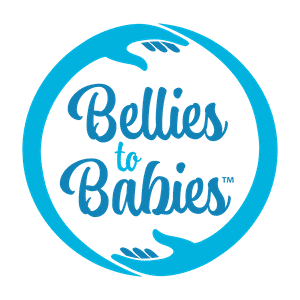Does the position of your baby have an impact on your labour? You bet it does!
What Is Optimal Fetal Positioning? It’s important to understand the origins of optimal fetal positioning. The term, created by birth educator Pauline Scott and midwife Jean Sutton, describes how women can help their babies to assume the best position for a safe and straightforward birth.
One of the things you can do to help your labour go well is to line your baby up so that it can take the easiest (optimal) pathway through your pelvis. Ideally, your baby should have it's back on your left and towards the front with feet kicking on your right, this is called an anterior position (or optimal fetal position).
In this position, the baby’s head is easily ‘flexed’,- their chin tucked onto their chest. The smallest part of their head presses down onto your cervix first. Most babies assume this position in preparation for birth. But there are many factors that influence your baby’s ability to settle into this optimal position
Occipito-anterior (OA) and occipito-posterior (OP) – often called "anterior" and "posterior" for short – are the technical terms to describe the way your baby is positioned in the uterus. Both of these terms apply to a baby who is head down. An OP baby and person will work harder (and possibly longer) in order to have a vaginal birth. Labour is often longer and more painful and may require assistance. A common occurrence in OP labours is back pain, caused by the hard surface of the baby's skull pressing on the person's lower back.
There are many things that you can do during your pregnancy to assist your baby in presenting optimally - let's have a look at these.
In our daily life, we sit a lot (not something our ancestors did often), and often we recline and slouch back when we are sitting – our chairs and couches all encourage us to sit this way. Slouch sitting tilts your pelvis backward, towards your spine and narrows the angle or space through which your baby must move to get it's head into your pelvis (engage) and out during birth. To negotiate these backward angles and smaller space it moves into a posterior position (OP) to get into your pelvis. It is not easy to move down and through the pelvis when beginning in that position – the labour tends to be longer and with a lot of backache, as mentioned above. The contractions are also described as more agitating, exhausting and difficult to handle.
How Do I Know What Position My Baby Is In?
When the baby is anterior, the back feels hard and smooth and rounded on one side of your tummy, and you will normally feel kicks under your ribs. When the baby is posterior your tummy may look flatter and feel more squishy. You may feel arms and legs towards the front, and kicks on the front towards the middle of your tummy.
Making it easier for you and your baby:
Leaning forward positions e.g. hands and knees, walking, leaning over a bean bag/cushions, pelvic rocking, gardening, will help keep your pelvis tilted forward and allows more space for your baby to turn. When sitting, sit up straight on your sit bones with your back straight, if you are sitting at a desk for extended periods, try using a gym ball to sit, bounce and rock on, you will find this way more comfortable than your desk chair. In the car, place a cushion under your bottom and lower back especially if it has bucket seats or going long distances.
When you need to sit, turn the chair the wrong way around and lean forward with your elbows resting on the bench/table with your knees apart (similar posture used, when sitting on the loo), keep your knees lower than your hips if possible. Kneel on the floor leaning over a large beanbag, gym ball or floor cushion to watch T.V. or your favorite movies. Lie/rest predominantly on your left (the recovery position is good with your tummy almost touching the bed, bottom leg out straight with top leg bent up and resting on a pillow).
Exercises such as walking, swimming (with tummy lowermost), yoga are all good and encourage good posture (which means no slouching!).
When you are having Braxton Hicks Contractions (practice contractions) it is ideal to use forward-leaning postures as this increases their effectiveness which aids in helping your baby maneuver into the optimum position. If possible stay on your feet, leaning forward and rocking your hips from side to side/up and down with each step and your bottom wiggling during contractions.
Now, let's have a look at what you need to avoid:
Try not to cross your legs as this decreases the space your baby has to move into your pelvis (crossing them at your ankles is fine). Do not sit back and slouch in a chair or lazy-boy chair and don't relax (slouch) on your couch with your feet up in front of you and your butt lower than your hips.
Avoid long car journeys (90 minutes+) if possible, if you do need to, ensure you stop regularly and stretch your legs and back with a short walk. Avoid 'squat exercises' if your baby is not in an optimal position and any other exercise that will help descend your baby deeper into your pelvis (once your baby is in an OA position, you can squat to help keep them in this position (YAY)).
Check with your LMC if you have any concerns or want to clarify the position of your baby.
Medical disclaimer: This page is for educational and informational purposes only and may not be construed as medical advice. The information is not intended to replace medical advice offered by physicians, osteopath, midwife, obstetrician, chiropractor or other qualified health care provider.

